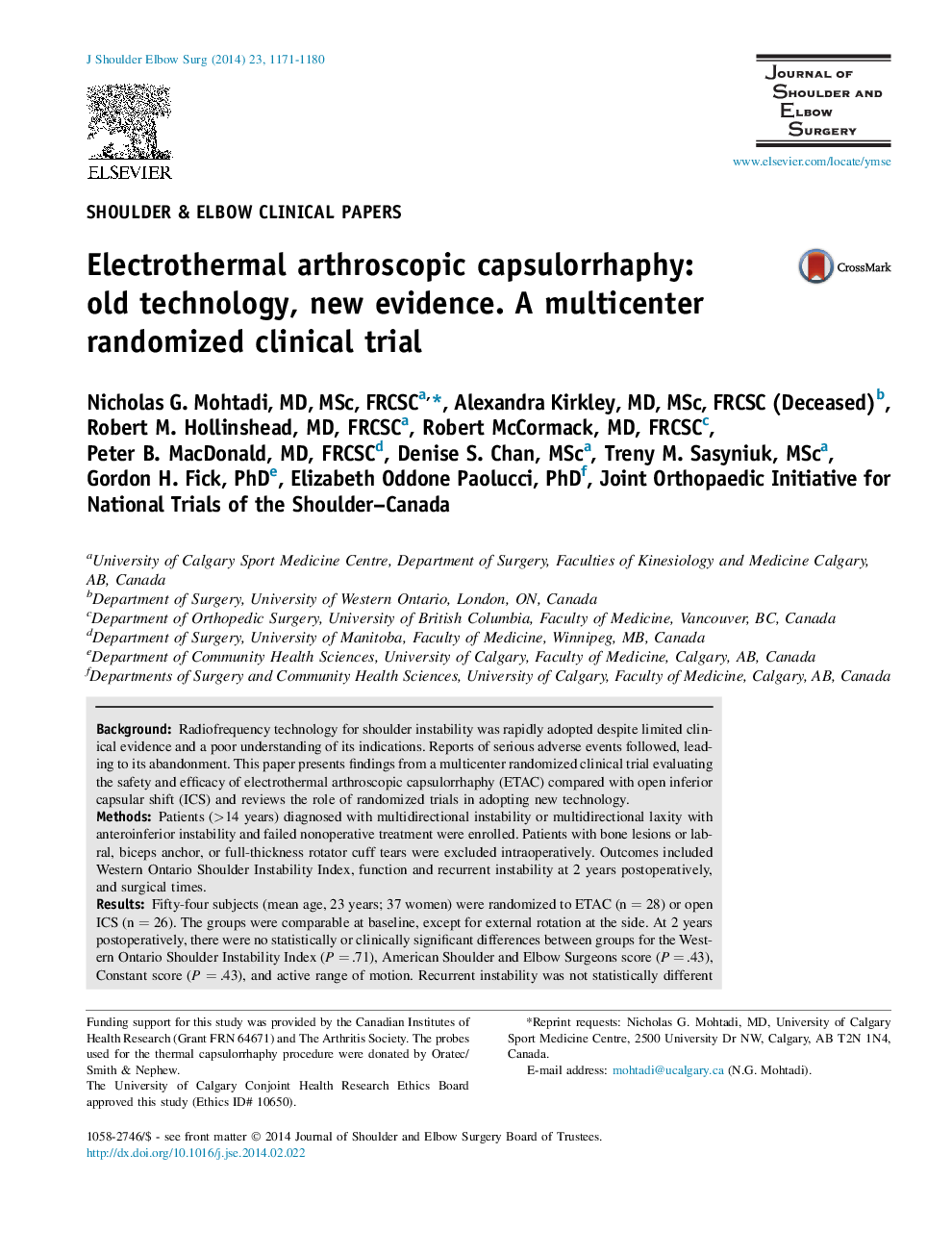| Article ID | Journal | Published Year | Pages | File Type |
|---|---|---|---|---|
| 4074117 | Journal of Shoulder and Elbow Surgery | 2014 | 10 Pages |
BackgroundRadiofrequency technology for shoulder instability was rapidly adopted despite limited clinical evidence and a poor understanding of its indications. Reports of serious adverse events followed, leading to its abandonment. This paper presents findings from a multicenter randomized clinical trial evaluating the safety and efficacy of electrothermal arthroscopic capsulorrhaphy (ETAC) compared with open inferior capsular shift (ICS) and reviews the role of randomized trials in adopting new technology.MethodsPatients (>14 years) diagnosed with multidirectional instability or multidirectional laxity with anteroinferior instability and failed nonoperative treatment were enrolled. Patients with bone lesions or labral, biceps anchor, or full-thickness rotator cuff tears were excluded intraoperatively. Outcomes included Western Ontario Shoulder Instability Index, function and recurrent instability at 2 years postoperatively, and surgical times.ResultsFifty-four subjects (mean age, 23 years; 37 women) were randomized to ETAC (n = 28) or open ICS (n = 26). The groups were comparable at baseline, except for external rotation at the side. At 2 years postoperatively, there were no statistically or clinically significant differences between groups for the Western Ontario Shoulder Instability Index (P = .71), American Shoulder and Elbow Surgeons score (P = .43), Constant score (P = .43), and active range of motion. Recurrent instability was not statistically different (ETAC, 2; open, 4; P = .41). ETAC (23 minutes) was significantly shorter than open ICS (59 minutes) (P < .01) surgery. Three subjects (1 ETAC, 2 open) had stiff shoulders.ConclusionsAt 2 years postoperatively, quality of life and functional outcomes between groups were not clinically different. ETAC had fewer complications and episodes of recurrence compared with open surgery. This evidence reinforces the need to critically evaluate new technology before widespread clinical use.
